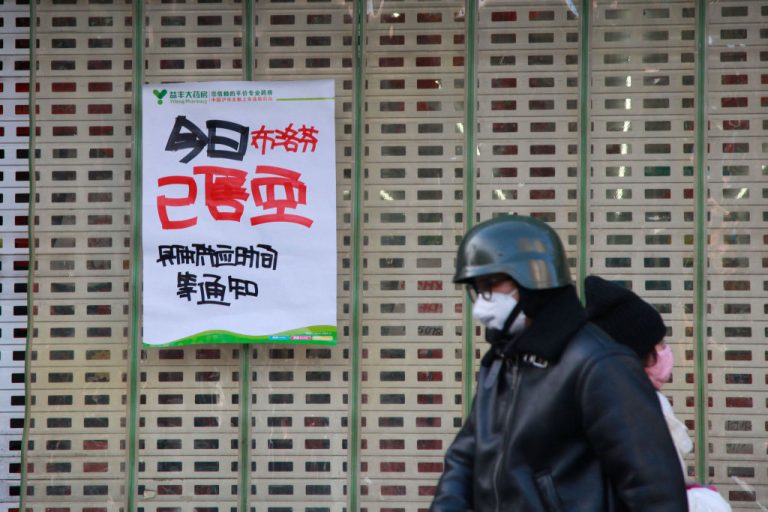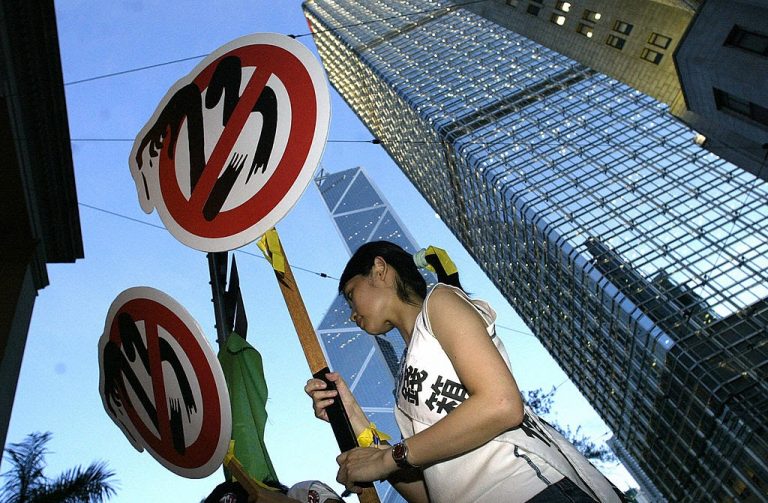Throughout the second half of 2022, one trend that was self-evident and reported on by many individuals across social media was a severe shortage of over the counter cold and flu medication and painkillers.
The source of the shortage, however, was widely unknown and mostly glossed over as supply shortages had been normalized by a long-standing empty shelves of baby formula and tampons attributed to some reflection of the supply chain crises that rocked North America and Europe in late 2021 and the early part of 2022.
RELATED ARTICLES
- Meditation: a Painkiller More Effective than Morphine
- Chinese National Claiming $40,000 Annual Income Buys $32 Million in Vancouver Real Estate
- BMW, Mercedes Export Scheme to China Plagues Canadian Dealers
- British Columbia Opioid Deaths Outpace COVID Fatalities Amid China-linked Drug Epidemic
However, the answer may very well have been hiding in plain sight and only revealed in recent days after news alleging that the source of an extremely major and widespread outbreak of an undefined variant of Coronavirus Disease 2019 (COVID-19) has been rocking Mainland China started echoing throughout establishment media following the Chinese Communist Party’s dropping of its abhorrent and misguided “Zero-COVID” measures.
The lede paragraph of a Dec. 30 article published by The Korea Times summarized the whole issue at once, “Some Chinese nationals appear to be bulk-purchasing cold medicines and fever relievers in Korea amid a shortage of drug supplies in their home country following an explosive surge in COVID-19 infections there.”
“A local media outlet reported on Wednesday that a Chinese national bought six million won ($4732) worth of cold medicine and pain relievers at a pharmacy in Hanam, Gyeonggi Province, followed by another report that a Chinese national purchased five million won worth of medication at a drugstore in Namyangju, Gyeonggi Province,” the article added.
Success
You are now signed up for our newsletter
Success
Check your email to complete sign up
Author Lee Hyo-jin was quick to note that the sweep was not without its consequences to South Korea’s supply chain and society, “Korea is also grappling with a scarce supply of medicines amid the ongoing ‘twindemic’ of the flu and the coronavirus.”
And although the topic has primarily been off the radar in the English-language establishment media, reporting from earlier in December showed the trend was already in motion.
Dec. 21 reporting by CNN stated that Chinese nationals had already begun sweeping out inventories of retail-facing cold medicine and painkillers from Hong Kong, Macau, Taiwan, and even as far away as Australia.
The Japan Times reported on Dec. 26 that the trend had likewise spread into the Land of the Rising Sun, an even greater problem as the country battles with its largest COVID-19 daily positive case count and highest daily death tolls since the pandemic began almost three years ago.
“A man from Fujian Province, 33, who was in Tokyo on vacation, bought about ¥10,000 worth of antipyretics and painkillers,” the article stated.
“Japanese medicines are popular because they make you feel better immediately after you take them. I want to send them to my family right away,” the man told the outlet.
The shortage of North American supplies is much longer standing than the present timeline.
In July of 2022, Canadian government-funded establishment media outlet CTV News quoted a representative of the Ontario Pharmacists Association as stating that both cough and cold medicine, as well as painkillers and children’s painkillers, were facing chronic supply shortages across Canada.
The rep was paraphrased by the outlet as attributing the cause to: “More people are developing respiratory tract infections and disruptions in the supply chain are affecting different stages of cold medication production.”
The article also attempted to pin the tail on “the relaxing of public health restrictions” despite COVID-19 mandates having been widely annihilated across the entirely country during and immediately after the historic Freedom Convoy trucker occupation protests at the Ottawa capital in response to Prime Minister Justin Trudeau’s edict that all truckers must accept vaccination in order to cross the Canadian border.
And although it appears there are no official reports of Chinese nationals using their purchasing power to send international supply of medication back to Mainland China under the auspices of a Communist Party directive, the CCP does have an overhanging precedent that is cause for investigation.
In April of 2020, Sam Cooper, investigative journalist for federally-funded Canadian establishment media outlet Global News, published an extensive report on how the Communist Party directed Chinese diaspora to collect enormous swaths of personal protective equipment from overseas inventories for transport back to the mainland during the earliest part of the original outbreak of Wuhan Pneumonia starting at least in October of 2019.
“In just six weeks, China imported 2.5 billion pieces of epidemic safety equipment, including over two billion safety masks, Chinese government data shows,” the author stated.
Cooper, an ardent CCP hawk and author of the important book Wilful Blindness: How a Criminal Network of Narcos, Tycoons and CCP Agents Infiltrated the West, put the consequences for China’s “friends” into context, “The result: starting in March, after COVID-19 had circled the globe, countries that provided masks to China in January and February were forced to compete for China’s supply.”
At-the-time leader of the official opposition Conservative Party of Canada, Erin O’Toole, told Cooper that the Canadian government and intelligence community was well aware of what was going on, however.
O’Toole stated, “One source told me in January it became well-known amongst military and emergency services that China was stockpiling masks and basically buying out as many quantities as it could.”
Adding, “And we know, … that senior officials, in the end of January and the early days of February, are equally aware at Public Works Canada, with respect to a run on PPEs.”
Cooper explained that the trend was far from grassroots or organic, but instead was absolutely state-sponsored, “China used diplomatic channels, state-owned businesses and Chinese diaspora community associations that are thought to be increasingly under the influence of Chinese President Xi Jinping’s powerful United Front Work Department (UFWD).”
The UFWD is an official branch of the CCP’s foreign policy initiative, serving to co-opt and corrupt virtually every level of international government, corporations, institutions, and organizations into being on board with the Party’s goal to spread its influence for the purposes of maintaining power.
Cooper elaborated, “A review of official reports from state media such as Xinhua as well as UFWD web pages in China and reports from associated Chinese-Canadian community groups, record massive PPE shipments of at least 100 tonnes from Canada to China in January and February.”
And noted that the endeavor ran directly out of the CCP’s consulates and embassies, “The efforts were organized through consulates in Vancouver, Toronto and Montreal. In Vancouver and Toronto, business associations officially tied to the UFWD appear to have taken the lead in the global drive for N95 masks, also securing and shipping PPE from other countries into China. “
“The global callout for masks was posted to UFWD websites and sent to Chinese consulates where United Front officials are embedded,” Cooper detailed, elaborating, “In March, the masks sold to China in January and February were being sold back to Mexico at 20 to 30 times the price.”

















